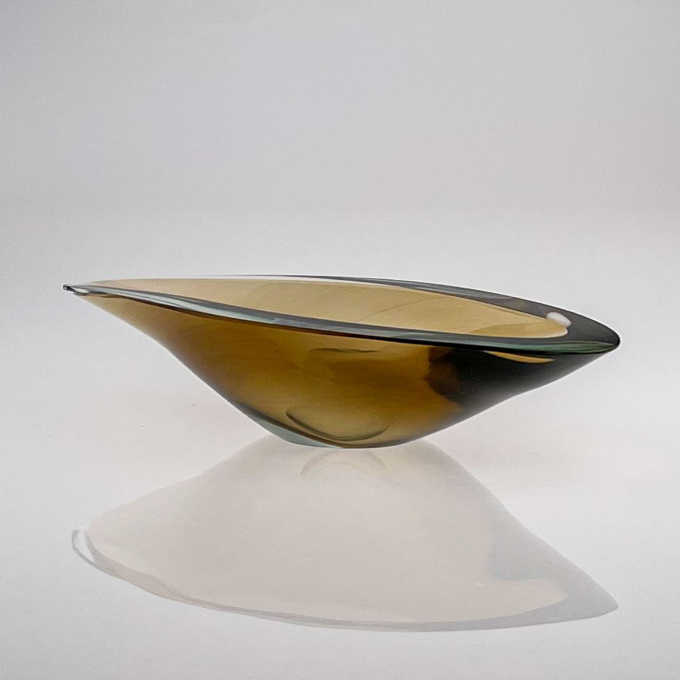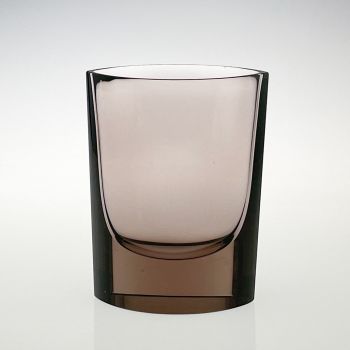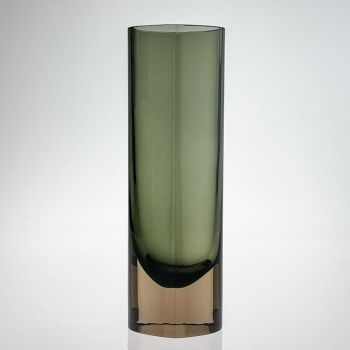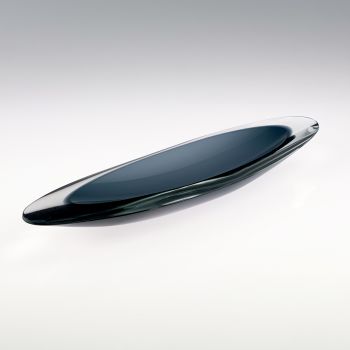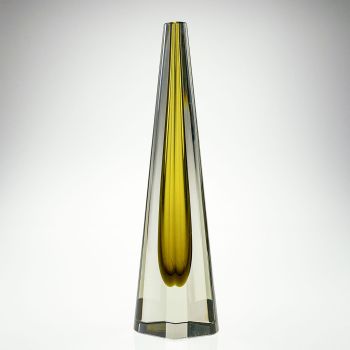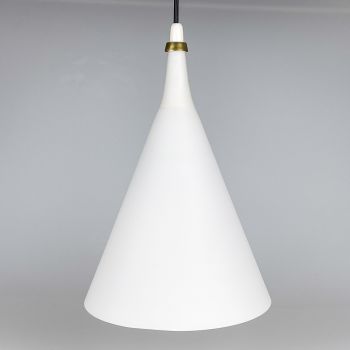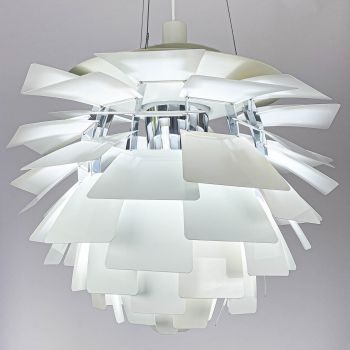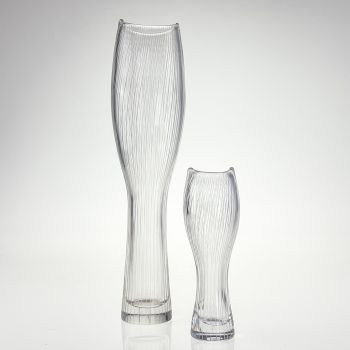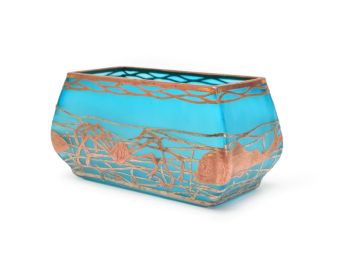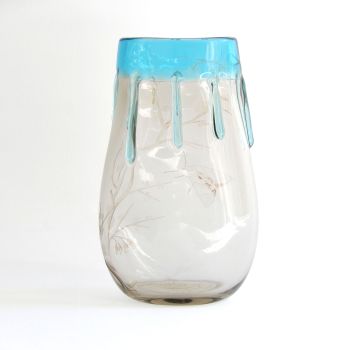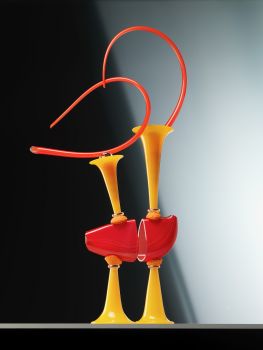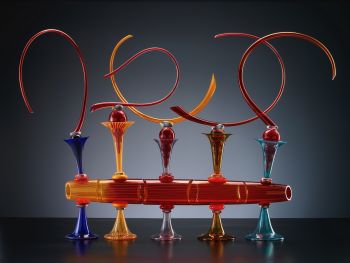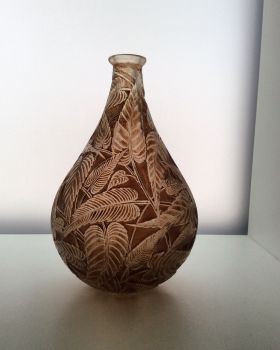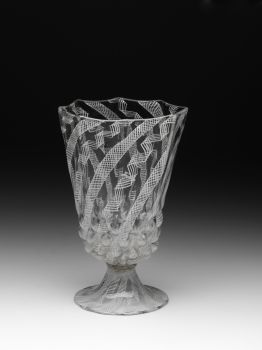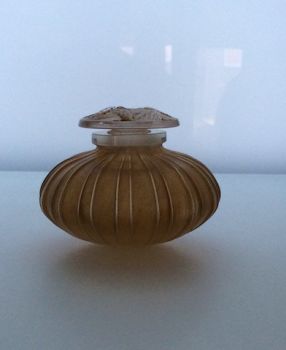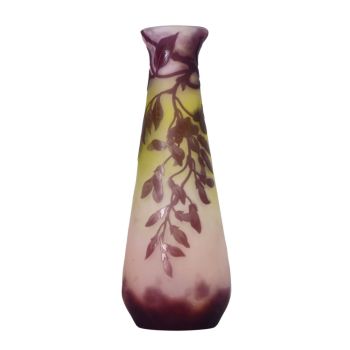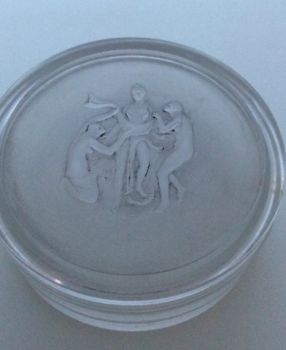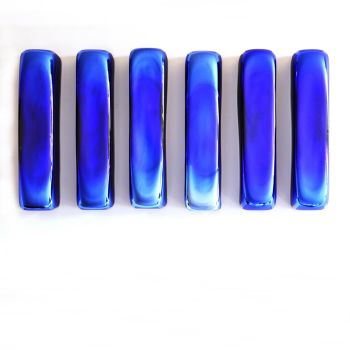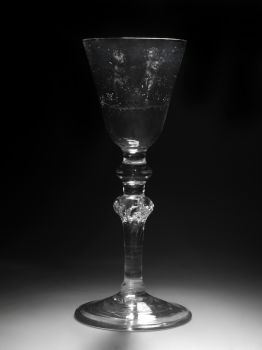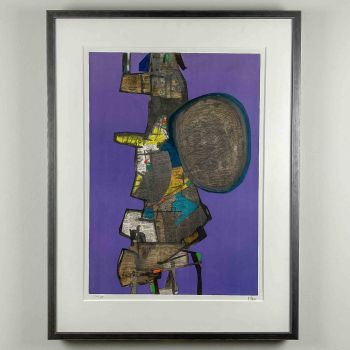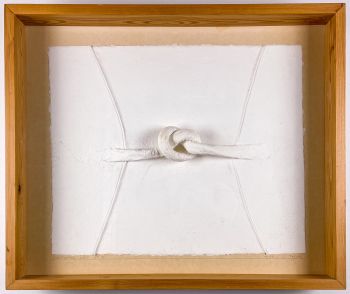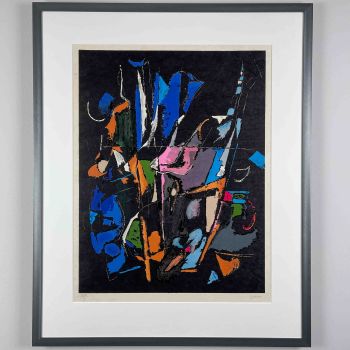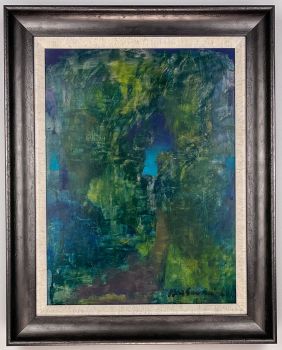A largest size glass art-object "Pajunlehti" or "Willowleaf" in unusual colour light-brown, model KF 1960 - 1965
Kaj Franck
Copo
4 ⨯ 24 ⨯ 9 cm
ConditionVery good
€ 750
Van Kerkhoff Art
- Sobre arteA free blown, flared, cut and polished light brown and clear cased glass art-object "Pajunlehti" or "Willowleaf", model KF 210. Designed by Kaj Franck in 1954 and executed by the Nuutajärvi-Notsjö glassworks circa 1960.
These art-objects were made in three different size-ranges and several colours between 1954 and 1963. This being a largest size example in a unusual light brown colour. The same colour used in the Nuutajärvi-Notsjö glassworks for one of the "Prisma" variants.
This Wilowleaf is etched-signed underneath the base. The etching has faded though and only K. F. remains readable. Either it was signed this way or the rest of the designers name has faded. The piece is in good condition, scratches underneath the base but no cracks or chips.
About Kaj Franck
Kaj Franck (Vyborg, Finland 1911 – Santorini, Greece 1989) was an influential Finnish designer and leading figure in Finnish art-world between 1940-1980.
Born in 1911 on the Finnish Russian border in a family of architects (his grandfather was director of the famous Arabia Ceramics factory) of Finnish-German-Swedish decent.
He attended the furniture department of Taideteollinen korkeakoulu (todays Aalto university school of Arts, Design and Architecture) in Helsinki.
After his studies he worked as a freelance designer until he joined Arabia as a designer in 1945. In 1950 he became Arabia’s Artistic Director. He also designed glass-objects for Iittala between 1946 and 1950 and between 1950 and 1976 for Nuutajärvi-Notsjö glassworks.
From 1945 onwards he worked as and educator at Taideteollinen korkeakoulu and he became the institute's Artistic Director in 1960.
His modernist designs in everyday tableware glass are considered to be a revolution and classic Finnish design object (most notably his Kilta tableware and Kartio glassware).
He is often referred to as “the conscience of Finnish design”, moderation, ecology and equality were Franck’s principles. He strove to minimise the number of everyday objects we need in our lives, drawing attention to the sustainability and life cycle of products.
Kay Franck’s designs are in collections of numerous museums all over the world. Among others: Design Museum Helsinki, Museum of Modern Art, New York, Stedelijk Museum Amsterdam and The British Museum, London. He was a recipient of many prizes. Most notably the Lunning prize in 1955, a “Grand prix” and several “Gold medals” at the Triennale di Milano.
Today his name is used for the prestigious “The Kaj Franck Design Prize” annually awarded by the Finnish Design Forum.
Execution
Nuutajärvi-Notsjö glassworks, Finland circa 1960
Marked
Etched-signed underneath the base. The etching has faded though and only K. F. remains readable. Either it was signed this way or the rest of the designers name has faded.
Condition
This art-object is in good vintage condition, some minor scratches and wear consistent with age and use. No chips or cracks.
Literature
Marianne Aav (ed.), Kaj Franck, Universal Forms, p.322
Dimensions
H. 4.9 cm
W. 24.9 cm
D. 9.8 cm
Weight 843 grams - Sobre artista
O designer finlandês de cerâmica e vidro Kaj Franck (1911-1989) percebeu uma verdade poderosa em sua distinta carreira: simples é belo. Apesar do mundo se mover em um ritmo cada vez mais rápido, de uma década para outra, essa simples verdade permanece. A inspiração e os princípios de Franck deram início a uma tradição no design finlandês, que ainda hoje está viva e forte. Seus trabalhos mais conhecidos são as séries Iittala Teema e Kartio, e sua herança faz parte de todos os lares finlandeses.
"Eu quero fazer uso de objetos que são tão óbvios que não são perceptíveis", Kaj Franck definiu seu próprio trabalho. Seus projetos atendiam às necessidades humanas básicas, servindo-lhes ferramentas com propriedades de objetos do cotidiano. produção em massa de custo e materialismo evitado, cultura descartável e ostentação. O mundo de Franck consistia em formas matemáticas básicas e formas simples, decoradas apenas com cores fortes.
O ponto de partida do trabalho de Franck foi a praticidade aliada à beleza. Embora pareça evidente hoje, em seu próprio tempo seus pensamentos eram radicais. Franck separou os estilos e as tendências da moda da tradição e deu-lhes um novo significado. No período de 1952-53, Franck mostrou que a louça não precisa ser excessivamente complexa com o lançamento da série Kilta como uma afirmação forte - era uma ideia inovadora que todos pudessem fazer os arranjos de mesa de acordo com suas próprias necessidades .
Franck começou seus projetos concentrando-se na ideia ou conceito subjacente, não na forma. Essa ênfase no aspecto da ideia do design também foi levada ao seu trabalho como professor e, posteriormente, como diretor artístico na Universidade de Arte e Design em Helsinque. Franck também foi um dos primeiros defensores da reciclagem e muitas vezes foi chamado de "consciência do design finlandês". Franck ganhou muitos prêmios em sua distinta carreira e tornou-se internacionalmente famoso. Hoje, o Kaj Franck Award é o reconhecimento de design de maior prestígio da Finlândia .
Você está interessado em comprar esta obra de arte?
Artwork details
Related artworks
- 1 - 4 / 9
Børge Mogensen
Teak wood “dropleaf” desk – Søborg Møbler, Denmark circa 19551950 - 1960
Preis auf AnfrageVan Kerkhoff Art
1 - 4 / 24Frères Daum
Daum Nancy – “Paysage Soleil Couchant” vase with two applied handles1900 - 1910
Preis auf AnfrageAntiques Emporium
Unbekannter Künstler
François-Théodore Legras – Tall “Fleurs de Pommier” apple blossoms vase1900 - 1909
Preis auf AnfrageAntiques Emporium
Amalric Walter
Amalric Walter & Henri Bergé – Crabe plumier1920 - 1929
Preis auf AnfrageAntiques Emporium
1 - 4 / 24Unbekannter Künstler
Ein seltenes Filigrana, ein Retortoli-Becher1550 - 1600
Preis auf AnfragePeter Korf de Gidts - Antiquairs
Unbekannter Künstler
Geflügelter venezianischer Kelch1624 - 1626
Preis auf AnfragePeter Korf de Gidts - Antiquairs
Gyrinus
Punktiertes graviertes Glas mit Putten1764 - 1766
Preis auf AnfragePeter Korf de Gidts - Antiquairs
1 - 4 / 24Børge Mogensen
Teak wood “dropleaf” desk – Søborg Møbler, Denmark circa 19551950 - 1960
Preis auf AnfrageVan Kerkhoff Art
1 - 4 / 12


